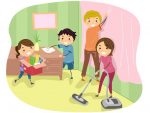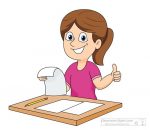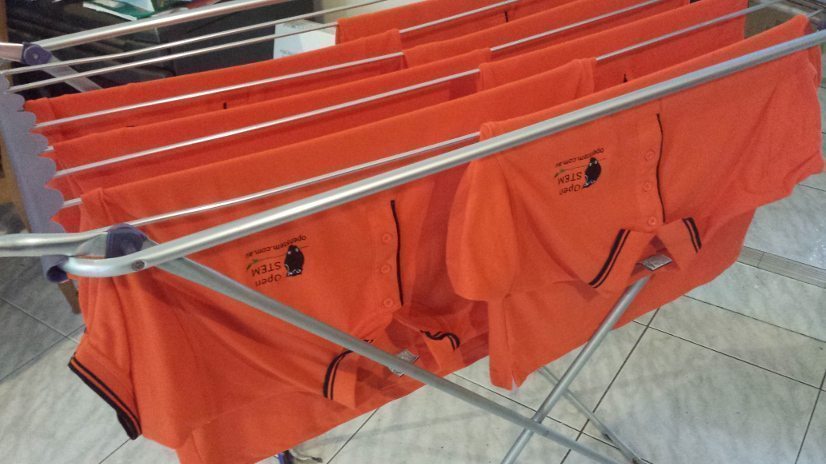NASA astronaut Peggy Whitson and two other spacefliers capped off a record-setting orbital mission with their return from the International Space Station.
Category: Uncategorized
This Week in HASS – term 2, week 8
 This week we are starting into the last stretch of the term. Students are well into their final sections of work. Our youngest students are thinking about how we care for places, slightly older students are displaying their posters and older students are giving their presentations.
This week we are starting into the last stretch of the term. Students are well into their final sections of work. Our youngest students are thinking about how we care for places, slightly older students are displaying their posters and older students are giving their presentations.
Foundation/Prep/Kindy to Year 3
Our youngest students doing the stand-alone Foundation/Prep/Kindy unit (F.2) are thinking about how we look after different places this week. Students in integrated Foundation/Prep/Kindy and Year 1 classes, doing Unit F.6, are displaying their posters on an issue in their local environment. These posters were prepared in proceeding weeks and can now be displayed either at school or in a local library or hall. The teacher may choose to invite parents to view the posters as well. Students in Years 1 (Unit 1.2), 2 (Unit 2.2) and 3 (Unit 3.2) also have posters to display on a range of issues, either at the school, in a local place, such as a park, or even a local heritage place. Discussions around points of view and the intended audience of the posters can help students to gain a more in-depth understanding and critique their own work.
Years 3 to 6
 Students in Years 3 (Unit 3.6), 4 (Unit 4.2), 5 (Unit 5.2) and 6 (Unit 6.2) are in the second of 3 weeks set aside for their presentations. The presentations cover a significant body of work and thus a 3 weeks of lessons are set aside for the presentations, as well as for finishing any other sections of work not yet completed. Year 3 students are considering extreme climate areas of Australia and other parts of the world, such as the Sahara Desert, Arctic and Antarctica and Mount Everest, by studying explorers such as Edmund Hillary and Tenzing Norgay, Robert Scott and Pawel Strzelecki. Year 4 students are studying explorers and the environments and animals of Africa and South America, such as Francisco Pizarro, the Giant Vampire Bat, Vasco Da Gama and the Cape Lion. Year 5 students are studying explorers, environments and animals of North America, such as Henry Hudson, Hernando de Soto and the Great Auk. Year 6 students are studying explorers, environments and indigenous peoples of Asia, such as Vitus Bering, Zheng He, Marco Polo, the Mongols and the Rus.
Students in Years 3 (Unit 3.6), 4 (Unit 4.2), 5 (Unit 5.2) and 6 (Unit 6.2) are in the second of 3 weeks set aside for their presentations. The presentations cover a significant body of work and thus a 3 weeks of lessons are set aside for the presentations, as well as for finishing any other sections of work not yet completed. Year 3 students are considering extreme climate areas of Australia and other parts of the world, such as the Sahara Desert, Arctic and Antarctica and Mount Everest, by studying explorers such as Edmund Hillary and Tenzing Norgay, Robert Scott and Pawel Strzelecki. Year 4 students are studying explorers and the environments and animals of Africa and South America, such as Francisco Pizarro, the Giant Vampire Bat, Vasco Da Gama and the Cape Lion. Year 5 students are studying explorers, environments and animals of North America, such as Henry Hudson, Hernando de Soto and the Great Auk. Year 6 students are studying explorers, environments and indigenous peoples of Asia, such as Vitus Bering, Zheng He, Marco Polo, the Mongols and the Rus.
Assessments
 Well, NAPLAN is behind us for another year and so we can all concentrate on curriculum work again! This year we have updated our assessment material to make it even easier to map the answers in the Student Workbooks with the curriculum codes. Remember, our units integrate across several curriculum areas. The model answers now contain colour coded curriculum codes that look like this:
Well, NAPLAN is behind us for another year and so we can all concentrate on curriculum work again! This year we have updated our assessment material to make it even easier to map the answers in the Student Workbooks with the curriculum codes. Remember, our units integrate across several curriculum areas. The model answers now contain colour coded curriculum codes that look like this: ![]() These numbers refer to specific curriculum strands, which are now also listed in our Assessment Guides. In the back of each Assessment Guide is a colour coded table – Gold for History; Green for Geography; Light Green for HASS Skills; Orange for Civics and Citizenship; Purple for Economics and Business and Blue for Science. Each curriculum code is included in this table, along with the rubric for grades A to E, or AP to BA for the younger students.
These numbers refer to specific curriculum strands, which are now also listed in our Assessment Guides. In the back of each Assessment Guide is a colour coded table – Gold for History; Green for Geography; Light Green for HASS Skills; Orange for Civics and Citizenship; Purple for Economics and Business and Blue for Science. Each curriculum code is included in this table, along with the rubric for grades A to E, or AP to BA for the younger students.
These updates mean that teachers can now match each question to the specific curriculum area being assessed, thus simplifying the process for grading, and reporting on, each curriculum area. So, if you need to report separate grades for Science and HASS, or even History and Civics and Citizenship, you can tally the results across the questions which address those subject areas, to obtain an overall grade for each subject. Since this can be done on a question-by-question basis, you can even keep a running tally of how each student is doing in each subject area through the term, by assessing those questions they have answered, on a regular basis.
 Please make sure that you have the latest updates of both the model answers and the assessment guides for each unit that you are teaching, with the codes as shown here. If you don’t have the latest updates, please download them from our site. Log in with your account, go to your downloads (click on “My Account” on the top right and then “Downloads” on the left). Find the Model Answers PDF for your unit(s) in the list of available downloads and click the button(s) to download each one again. Email us if there are any issues.
Please make sure that you have the latest updates of both the model answers and the assessment guides for each unit that you are teaching, with the codes as shown here. If you don’t have the latest updates, please download them from our site. Log in with your account, go to your downloads (click on “My Account” on the top right and then “Downloads” on the left). Find the Model Answers PDF for your unit(s) in the list of available downloads and click the button(s) to download each one again. Email us if there are any issues.
Growth fun: stock of physical resources
It’s most enjoyable being part of a growing company that’s helping to make a real difference for students and our future generation.
For our physical resources, we purposely don’t keep large stock as that would make things prohibitively expensive. The trade-off is that we can’t always do instant shipments. Typically, we do order in new items when we’re running low. It’s not an entirely straightforward process, since we have to assemble kits such as the Ginger Beer Classroom Kit and the Soldering Kit ourselves, by necessity from different sources.
When a product sees a particular spike in interest, we sometimes briefly run out. Actually that’s quite normal and it happens even with companies that keep lots of stock. When out-of-stock, we can generally fulfil the order within 1-2 weeks. A brief delay, but with the advantage that you get what you want, at a reasonable price, from a trusted Australian supplier with friendly service. We believe that these aspects adequately compensate for the lack of “instant gratification”…
So where are we at right now with our physical resources stock? A brief overview:
- Blackline World Map: updated edition just in, plenty of stock
- Mirobot drawing turtle robot kit: plenty of stock (for now)
- Soldering Kit: a few
- Robot Turtles Board Game: awaiting new shipment – also getting some of the new extension cards packs
- Speed cube (3x3x3): a few
- Ginger Beer Classroom Kit: just out again – generally part of our ginger beer (non-alcoholic) cafe program
If you have any questions about any of our products, please don’t hesitate to ask! Contact us.
Use your Electoral Right to Vote
Did you know…
In 1863, the state of Victoria allowed everyone on the municipal rolls to vote, which included women; who voted in the 1864 general election. This was regarded as a mistake by the men in government, and the law was changed to exclude women in 1865. It then took another 40 years before women got the vote again – first federally, then in each of the states individually.
People fought for these and other rights. You now have the power to choose for what you believe is right.
Please use your electoral right to vote. It’s important.
New shirts for OpenSTEM people
Horays, our new polo shirts have arrived! We’re very happy with how they came out with the embroidered owl logo.

We go out & about quite a bit to schools and other events, so it’s useful to be easily recognisable in those environments. The shirts standardise that effort and the colour scheme matches our branding very well.
On the rack, it looks a bit like the outfits for a sports team 😉


My grade 4 son's review is below. I think he liked seeing the patterns it made. It was just a…
Brad